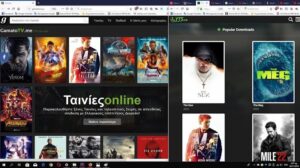How to Achieve the Best Podcast Audio Quality

Recording extraordinary podcast sounds takes some training, yet you can avoid a ton of experimentation with these digital podcast recording tips. No measure of altering will make horrendous source sound incredible so practice these to-the-direct procedures toward catch clean digital podcast accounts from the beginning.
The Top Podcast Recording Tips
Extraordinary podcast production accounts boil down to the host’s capacity to create the right solid. These tips are tied to establishing the ideal recording climate and effective procedures you can utilize each time you plunk down to make a scene.
1. Utilize the right gear
You can record a digital podcast with your PC’s amplifier, yet we don’t suggest it. You’ll require a couple of bits of digital podcast gear to record proficient and clear sound. This is the most straightforward of all our podcast recording tips, and it most significantly affects your sound quality.
2. Remember to heat up
To express the self-evident, recording digital podcast scenes requires a touch of talking. Maybe then, going into your meeting, cool, warm up your mouth and vocal lines by rehearsing your content or saying a couple of tongue twisters. Appropriately heating up will work on your correspondence and hold you back from staggering over words. There’s nothing better than conveying your focuses faultlessly the first run-through around.
3. Record in a tiny, calm room
Record scenes in the littlest and calmest room conceivable to decrease outside commotion and echoes. Close your windows and entryways, turn off any machines or gadgets that make a constant commotion, and put your pets someplace they will not upset you for two or three hours. Fill your recording climate with delicate things (love seats, pads, cover, and so on) that assimilate sound to stifle any wayward commotions.
4. Make a concise commotion profile
Respite for four or five seconds toward the start of your recording to make a commotion profile. Stay quiet and kill all ecological commotion. You can utilize this snapshot of the dead during altering to distinguish and eliminate any foundation commotion by following the Audacity to podcast’s instructional exercise on eliminating clamor using audacity.
5. Embrace legitimate receiver methods
In the first place, place your mouthpiece at similar tallness as your mouth. Then, at that point, sit a couple of crawls back and have the pop channel between your mouth and the mic. Then, center around your mouth’s separation from the mouthpiece arrangement and change your body for the ideal volume level. Keep in mind, the nearer you are to the mic, the stronger your voice will sound. While you can adjust your voice’s volume level after creation to keep it predictable, decrease your altering time by keeping your mouth a similar separation from the mic while recording.
6. Watch your volume levels
As you keep your amplifier distance reliable, you can screen the volume levels while you record. Most recording virtual products show your levels as a scale from green, yellow, to red. When you need to add accentuation, save your volume in the green segment for your typical conversational tone and yellow areas. Avoid the red component, or your sound will be twisted.
7. Watch your breath
We as a whole need to inhale; however, controlling the sound of your breathes in and breathes out will stop any giant whirlwinds from sneaking into your recording. For calmer breathes, sit upright, take a stab at taking more modest breaths, or totally move your mouth away from a little from the mic when you need to take a significant drag.
8. Keep your body still
Moving your body around makes foundation commotion while recording. This happens a ton on the off chance that you use earbud earphones. The wire lays away from the plain view, which makes the mouthpiece rub against your shirt and neckline. Attempt to remain still in your seat with your feet fixed. Try not to move things around your work area. In the event that you print your notes on paper, move them around as quietly as conceivable as well.
9. Sort out issues of sound early
Make a test recording before you formally begin to jump into your scene. In case there’s an issue with your visitor’s receiver, or you can hear the development team outside, don’t attempt to control through. Recognize and resolve sound issues from the beginning or even stand by to record. The direst outcome imaginable is recording a whole scene just to track down. There’s a more significant issue you can’t fix in altering.
10. Record with earphones (your visitor as well)
While it’s feasible to record a digital broadcast scene without earphones, you’ll likely catch a ton of sound input. Have everybody wear earphones, so you don’t need to squander valuable altering hours tidying it up.
These are some crucial techniques to achieve the best podcast audio quality. Follow these steps to help you ease the podcast mixing process.







